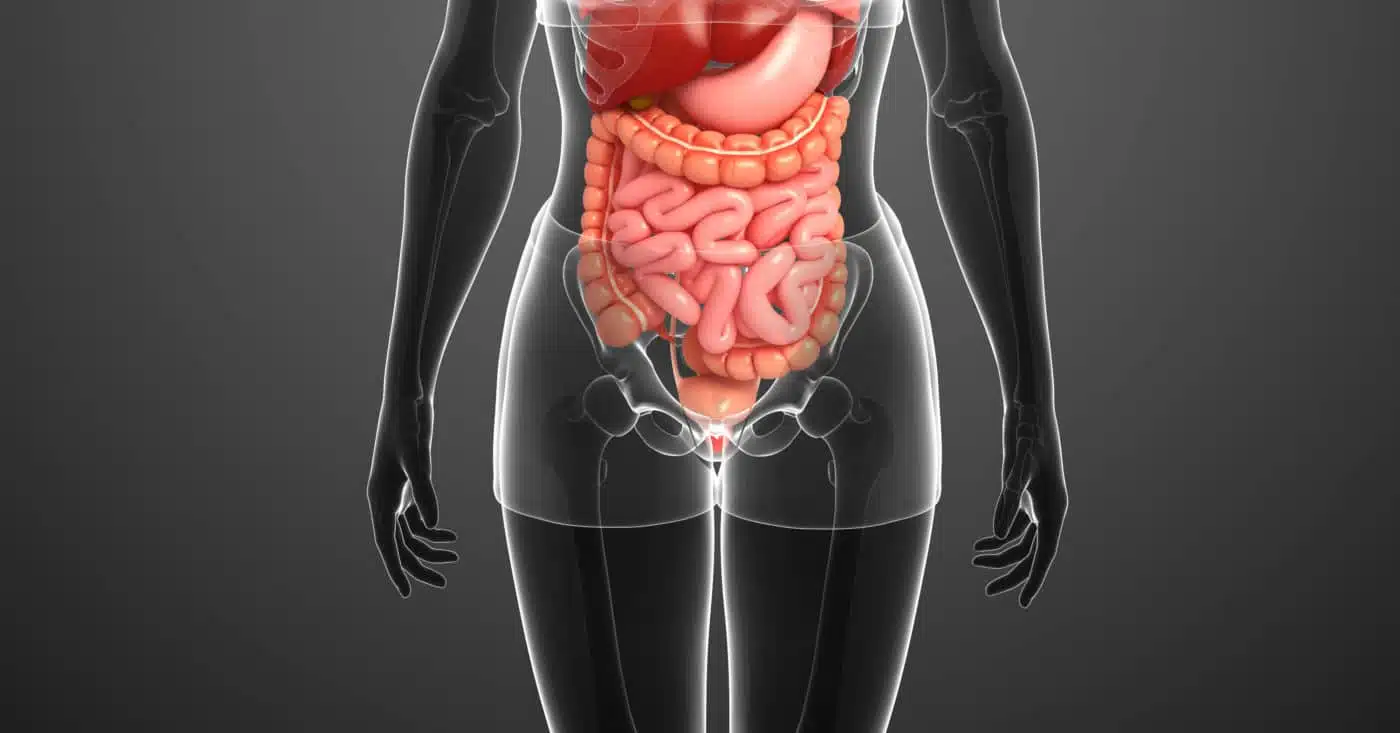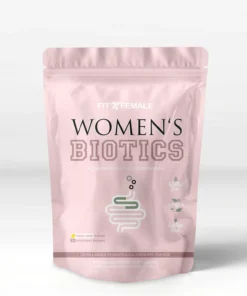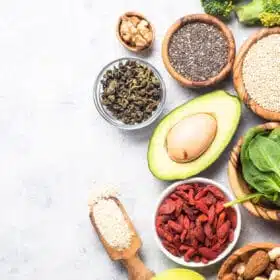The human digestive system is a true marvel of evolution. Hardly any other organ system is as complex and has such a far-reaching influence on our performance and health. This makes it all the more important that you have a rough understanding of how the digestive system works and how you can give your digestive system a boost.
In the following article, we would like to take a look at these basics. So if you want to know what the individual organs do, what causes digestive disorders and how you can improve your digestion with simple tips, you should read on.
What role does our digestive system play?
Our digestive system is one of the largest organ systems in our body. In addition to organs such as the stomach, intestines and gallbladder, hormones, bacteria and even the blood are also strictly speaking part of the digestive system.
The basic task of the digestive organs is to break down the ingested food into smaller components and prepare the nutrients for transportation to their destination. The nutrients obtained in this way can then either be converted into energy or used as building or functional materials.
Why a well-functioning digestive system is so important
A well-functioning digestion of macronutrients (fats, carbohydrates, proteins) and micronutrients (e.g. vitamins, minerals, trace elements) is essential for a healthy body. After all, we need the broken-down nutrients to generate energy and maintain all bodily functions.
In addition to the provision of energy, this also affects growth, cell repair, the transmission of nerve impulses and the production of hormones and enzymes. All of these processes become imbalanced if digestion is not functioning properly. The consequences are typical diseases of civilization, deficiency symptoms and, in the worst case, even death.
How long does digestion take?
How long digestion takes depends on various factors. It starts with what you eat. For example, it depends on how long the food has to remain in the stomach until the stomach acid has processed it sufficiently for the further digestion steps. The gastric retention time can easily range from 30 minutes (e.g. whey protein shake) to six hours (e.g. fatty beef with fiber-rich cabbage).
This is followed by the intestinal passage. Here, too, there are several influencing factors, such as the concentration of digestive enzymes and the movement of the intestinal muscles (peristalsis). However, the passage from the stomach to the large intestine takes roughly 6-8 hours.
The further course is highly individual. You can have fun and determine your personal digestion time. All you need is a portion of corn and the stopwatch function on your smartphone. You can probably guess how the whole thing works in practice. In total, food can easily spend 30-35 hours in your body.
Tasks of our organs in the digestive system
You don't need a degree in rocket science to understand that the stomach, small intestine and large intestine are involved in digestion. But even without the liver, gallbladder or pancreas, you could forget about digestion. However, for a deeper understanding of the digestive system, you should know what tasks all the organs involved have.
1 - Mouth
Digestion begins in the mouth. After all, it performs important tasks in the digestive system. First and foremost is chewing. This divides the food into smaller pieces that can be processed more easily in the stomach. The smaller the food particles, the more favorable the ratio of surface area to volume. This increases the surface area for stomach acid to attack, which shortens the digestion process.
In addition, saliva already contains enzymes. Saliva not only transforms the food into an easy-to-swallow food slurry, but also pre-digests carbohydrates. This is why, for example, mixed rye bread tastes sweet if you chew on it for a while.
2- Oesophagus
As soon as you swallow the food, muscles move the food pulp into the oesophagus. Contrary to what you might think, the "connecting passage" between the mouth and stomach is not a smooth tube. The oval-shaped oesophagus has numerous muscles that transport the chyme towards the stomach by tensing and relaxing in wave-like movements. Once the food has reached the lower end of the oesophagus, the chyme irritates the sphincter muscle of the lower oesophagus. The sphincter muscle then opens and allows the food to pass into the stomach.
3- Stomach
The stomach acts as a kind of buffer that digests large quantities of food. The food pulp comes into contact here with digestive enzymes and stomach acid. The latter is highly concentrated hydrochloric acid, which chemically breaks down the food pulp further. The rhythmic movement of the stomach muscles mixes stomach acid and food pulp.
This allows the acid and digestive enzymes to come into optimal contact with the food, which also starts the protein digestion process. The hydrochloric acid also kills many harmful bacteria contained in the food. After 30 minutes to 8 hours in the stomach, the end result is a semi-liquid mass that is passed into the small intestine.
4- Liver
In order for food to be digested in the small intestine, your body needs bile. This is produced by the liver. The task of bile is to support the digestive enzymes in breaking down fats into fatty acids. With the help of bile, food is broken down further in the small intestine. Nutrients absorbed through the small intestine enter the bloodstream, where the liver cleanses the blood of harmful substances.
5- Gallbladder
The gallbladder, which is located directly below the liver, has the task of storing bile and recycling excess bile from the small intestine. This means that the bile can be used again at a later meal. As soon as you eat something, the gallbladder contracts due to nerve signals. The bile then enters the small intestine via the bile ducts.
6- Pancreas
The pancreas is just as irreplaceable for digestion as the gallbladder. It is responsible for producing a secretion that your body needs for the chemical digestion of proteins, fats and carbohydrates. The secretion passes through the pancreatic duct into the common bile duct, where it mixes with bile and finally enters the small intestine.
Info: The pancreas is also responsible for producing insulin. The hormone is crucial for controlling blood sugar levels.
7- Small intestine
The small intestine is a tube about 6 meters long and 2.5 centimetres thick, which is connected to the stomach via a sphincter muscle (pylorus). The small intestine is characterized by its tortuous shape with numerous bulges, folds, villi and elevations. This gives the small intestine a very large surface area, making it easier to absorb the nutrients contained in the chyme.
Absorption mainly takes place with the help of the intestinal villi, which are covered with a hair-like structure. If these are irritated, further digestive enzymes enter the small intestine. With the help of the digestive enzymes, the small intestine extracts around 90 percent of all nutrients from the food pulp along its entire length and thus takes over the lion's share of nutrient absorption.
8- Large intestine
With a length of around 1.5 meters, the large intestine is significantly shorter than the small intestine - but with a diameter of a good 6 centimetres, it is considerably thicker. The large intestine is responsible for the final stage of digestion. After the food has been almost completely freed of nutrients and passes from the small intestine into the large intestine, the large intestine removes minerals and fat-soluble vitamins as well as water from the food.
The intestinal flora also ensures that the last nutrients are broken down from the food and separated from waste products. Solid stools are formed by removing water. As soon as sufficient stool has accumulated, it reaches the rectum and triggers the corresponding stimulus for excretion.
Women's Biotics
People who suffer from overweight have a different bacterial flora than slim people. Often overweight people are colonized with "Firmicutes" bacteria and too little with the rank-and-slim "Bac-teroidetes" bacteria. Also a sign of a not optimal colonization in the intestine are digestive problems. Women's Biotics is the ultimate all-in-one product for a healthy, even better intestinal flora and supports you that the good intestinal bacteria settle in the long term.
Women's BioticsTypical signs of indigestion
As you can see, our digestive system is not only extremely important, but also very complex. This makes it all the more important that you recognize digestive system disorders as early as possible. Watch out for warning signs such as bloating, constipation, diarrhea or abdominal pain.
Heartburn, nausea, sickness, vomiting and difficulty swallowing can also indicate digestive disorders. Persistent weight gain (or persistent weight loss) and bleeding from the intestines should be taken particularly seriously. In the latter case in particular, you should definitely consult your doctor.
There are many causes of digestive disorders
Possible causes of digestive disorders are extremely varied. The spectrum ranges from a simple food intolerance to diseases such as hepatitis. The following causes, among others, can be behind digestive problems:
- Rectal problems (e.g. hemorrhoids, proctitis, anal fissure)
- Esophageal stenosis, achalasia, esophagitis
- Alcohol-related diseases (e.g. alcoholic hepatitis)
- Liver diseases (e.g. hepatitis B, hepatitis C, liver cirrhosis)
- Stomach ulcers, gastritis, stomach cancer
- Diaphragmatic hernia
- Gastroesophageal reflux disease
- Gallstones
- Pancreatic diseases (e.g. pseudocyst, pancreatitis)
- Crohn's disease
- Ulcerative colitis
- Irritable bowel syndrome (IBS)
- Food poisoning, food allergy (e.g. lactose intolerance)
Please note: Digestive problems can also occur in the first few days after changing your diet. This is the case, for example, if you suddenly start eating a diet very high in protein and fiber.
Boost your digestion with these 9 tips
Fortunately, you can keep your digestive tract healthy and even support your digestion with a few simple tips. By supporting your digestion, you support the optimal functioning of your body. This will benefit your health, improve your athletic performance and simply make you feel better.
Tip 1 - Drink enough fluids
Almost every process in our body runs better with sufficient water. Digestion is no different. The digestion of fats and soluble fiber in particular requires a lot of water.
Sufficient water intake also keeps the stool smooth, which in turn reduces the risk of anafissures and other injuries in the anal area. Therefore, drink at least 2 liters of water a day. Ideally, however, you should drink about 1 liter per 20 kilograms of body weight per day.
Interesting fact: Even if some pseudo-hip guru sites claim the opposite, drinking before eating does not dilute your stomach acid. Instead of inhibiting digestion, fluid intake actually aids digestion.
Tip 2 - Reduce excess weight
Being overweight is a risk factor for digestive problems. For example, the sphincter muscle between the stomach and oesophagus may not close properly. This can cause stomach acid to leak back into the oesophagus and lead to unpleasant symptoms such as a burning sensation behind the breastbone.
Excess weight itself also causes problems for the digestive tract, as it exerts pressure on the digestive organs. This applies in particular to fat in the abdominal cavity, which additionally constricts the organs.
Tip 3 - Exercise regularly
The lack of exercise caused by our modern lifestyle is also a significant risk factor for digestive problems. Exercise regularly to get the intestinal and stomach muscles moving. Endurance training such as running, swimming, cycling and rowing is ideal. Half an hour a day is enough and not only supports your digestion, but also your cardiovascular system.
Tip 4 - Chew your food thoroughly
The better you chew your food, the easier it is for your body to continue the digestion process. The smaller the food particles are, the easier it is for your body. If you gulp down your food, it's no wonder that you struggle with bloating, flatulence and the like.
Therefore, chew each solid bite a good 20 times before swallowing it. Careful chewing also gives your stomach enough time to prepare for digestion. It also makes you feel full sooner. Ideal conditions if you want to lose weight.
Tip 5 - Eat a high-fiber diet
A high-fiber diet is also very beneficial in several ways. Insoluble fiber, for example, ensures that the stool thickens and acquires a healthy consistency that allows it to move easily through the intestines. In addition, fiber makes it easier to break down fats and thus digest high-fat foods.
Fiber also serves as a nutritional basis for the intestinal flora. These are "good" intestinal bacteria that help to break down nutrients, neutralize toxins and generally ensure your intestinal health.
Tip 6 - Avoid cold food
The digestive system works best when it is warm, as the enzymes involved in digestion need warmth in order to work optimally. Warm food that is at least at body temperature is therefore much easier to digest than cold food, as it first has to be heated up to body temperature.
Tip 7 - Drink less alcohol
Alcohol is a neurotoxin. As the body gives top priority to breaking down the "poison", it reduces all other processes. So until the alcohol has been broken down, digestion does not function optimally either. Anyone who has ever drank through the night knows the game from experience.
For the same reason, the obligatory schnapps after a meal is anything but conducive to digestion. A coffee or espresso is much better. Drinking too much alcohol also leads to heartburn, liver problems, diarrhea, etc. So only drink alcohol in moderation.
Tip 8 - Stop smoking
Just like too much alcohol, smoking also damages the digestive tract. On the one hand, this is due to the many toxins it contains. On the other hand, regular smoking leads to a weakening of the sphincter muscle between the oesophagus and stomach. Heartburn provoked in this way can become chronic and, in the worst case, even increase the risk of stomach and bowel cancer.
Tip 9 - Support your gut with probiotics
Beneficial bacteria are essential for our gut. They keep harmful bacteria in check, strengthen the immune system and are essential for optimal digestion and nutrient absorption. Regular consumption of foods containing probiotics is therefore the ideal boost for your gut. Good sources of probiotics are sourdough bread, sauerkraut, cultured dairy products or fermented soybeans.
With the right diet and optimal support, you can get your digestive system back on track.
- Vegan Fiber
" Vegan Fiber - Natural, vegan fiber powder made from apple & rye fibers. Gives your intestines the fiber they need to function properly. " - Omega 3
"Omega 3 boosts your digestive tract, helps stimulate metabolism, and helps you regulate cholesterol." - Vitamin D3
" Vitamin D3 capsules - micronutrients such as vitamins, minerals and trace elements are at least as important for our body as the macronutrients carbohydrates, proteins and fat."






